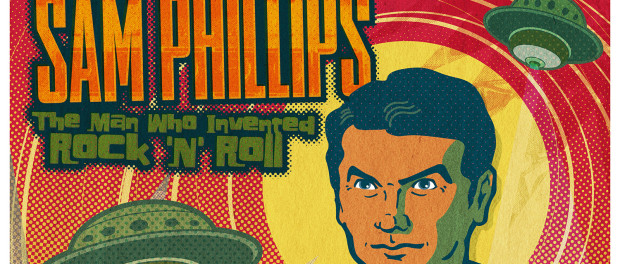Sam Philips Explores the Birth of Rock ‘n Roll
Rock music has come a long way since it’s inception in the ’50s. Rock ‘n Roll, as it was known back then, had its roots in country and gospel music but added a wild streak: the performers leaned towards the bad boy type, the lyrics were thinly veiled allegories on sex, and the music itself was raw and youthful. Parents didn’t understand all that noise, but the kids loved it, in part because their parents hated it. My mom, at 73, still holds a grudge against her dad for making her turn off the TV when Elvis was on the Ed Sullivan Show. And quite significantly, it incorporated the music of African Americans into “white people” music, something that shocked audiences.
But in those early days, at the epicenter of the big bang that created rock music, was Sun Studios in Memphis, and its label Sun Records. And the man behind Sun was Sam Philips. Philips wasn’t interested in producing the perfect record: what he wanted was catch lightning in a bottle. Capturing a great musical moment was more important than a perfect take. And he got the biggest lighting bolt he could hope for when in 1953 a local 18-year-old truck driver named Elvis Presley walked into his studio to record a song for his mother’s birthday. He went on to record a few acetates before Philips saw in him the perfect singer to bring black music to a white audience. According to legend, at the end of a session, Elvis grabbed a guitar and started a spirited version of Arthur Cruddup’s “That’s All Right”, and that is when Philips realized the singer’s potential.
In the wake of Elvis’s early success, more singers broke through from Sun Studios. Jerry Lee Lewis, Carl Perkins (who recorded “Blue Suede Shoes” before Elvis did and is included in here), Johnny Cash and Roy Orbison all came through Sun Records and were wildly successful in the early days of rock n’ roll. Sam Philips also made records for Chess, the famous blues label, and a few Howlin’ Wolf tracks can be found on this.
So this compilation doesn’t aim to be a comprehensive Greatest Hits release, but an idiosyncratic selection of important and lesser known tracks drawn from Sam Philips’ career. One of the important tracks included on this compilation is “Rocket 88” by Jackie Brenston and His Delta Cats, which is wildly regarded as the first “rock ‘n roll record”. In reality, the band was Ike Turner’s Kings of Rhythm (of Ike and Tina fame) but Sam Philips didn’t like his voice so he got Brenston, the saxophonist in the band, to sing it. It is a perfect example of Philips’ attempt to catch moments instead of perfection. The piano’s out of tune, and the band isn’t super tight, and the guitar sounds distorted (the amp fell out of the trunk of their car on the drive to the studio and busted the speaker cone) but it has an maniacal energy that must have been amazing for audiences in 1951.
There is a pair of tracks that, while presented apart in the tracklist, offer an interesting comparison. “Mystery Train” by Little Junior’s Blue Flame is based on a traditional song and is utterly forgettable in that incarnation. But Elvis’s version, a one-take throwaway, exhibits so much more urgency and passion that it becomes difficult to imagine the piece played any other way. These songs are really the foundations of rock.
Forgotten gems flow in and out of well known songs, bringing a sense of familiarity that anchors the experience. You can shut your eyes and imagine yourself in a diner in the 50’s, pumping coins into a beat up jukebox. This compilation is a great release for someone who’d like to rediscover songs they haven’t heard in a long time, or for anyone eager for a time machine trip back to the formative years of rock, as shaped by the genius of Sam Philips.
‘Sam Phillips: The Man Who Invented Rock ‘n’ Roll,’ is a companion to Peter Guralnick’s forthcoming biography of the same name.







